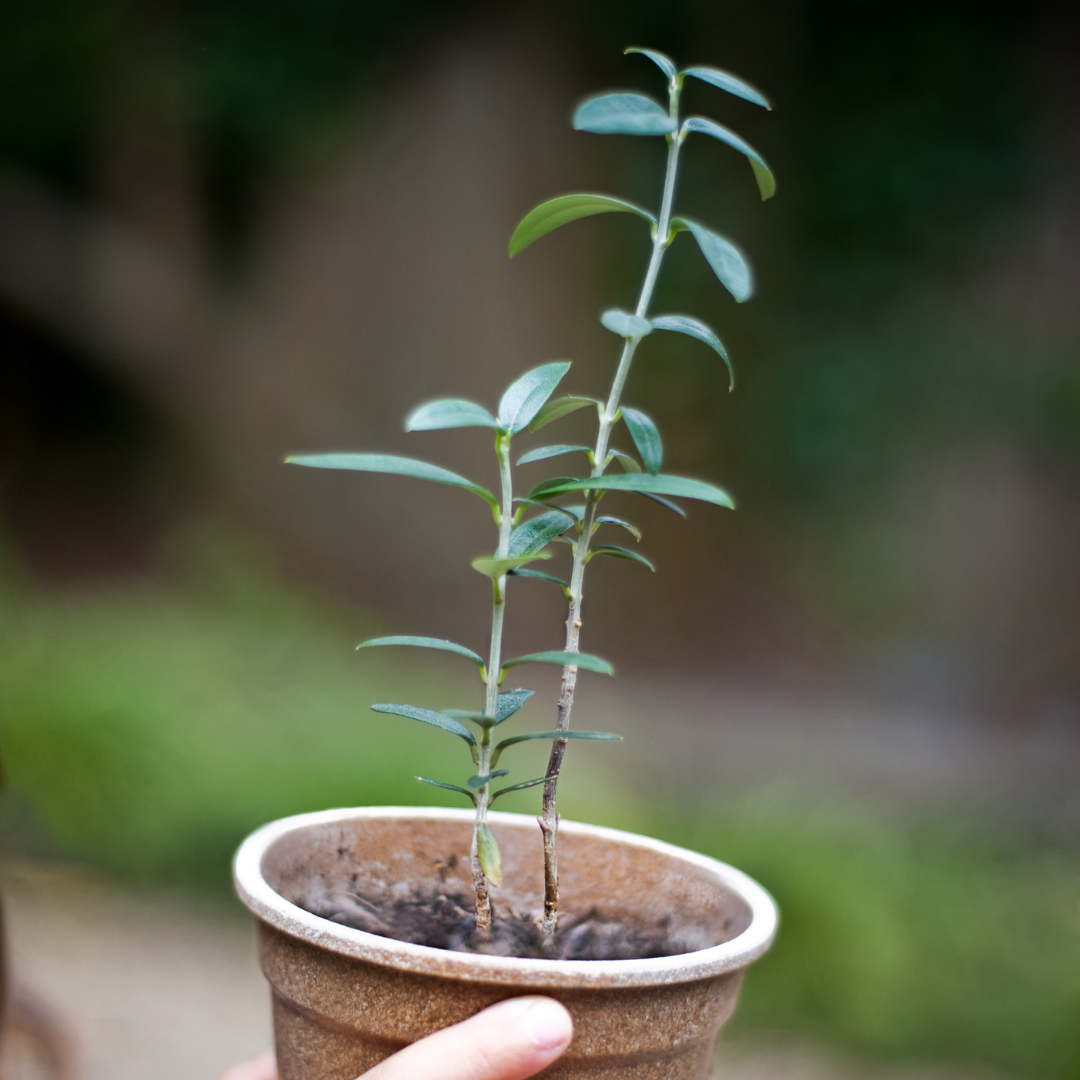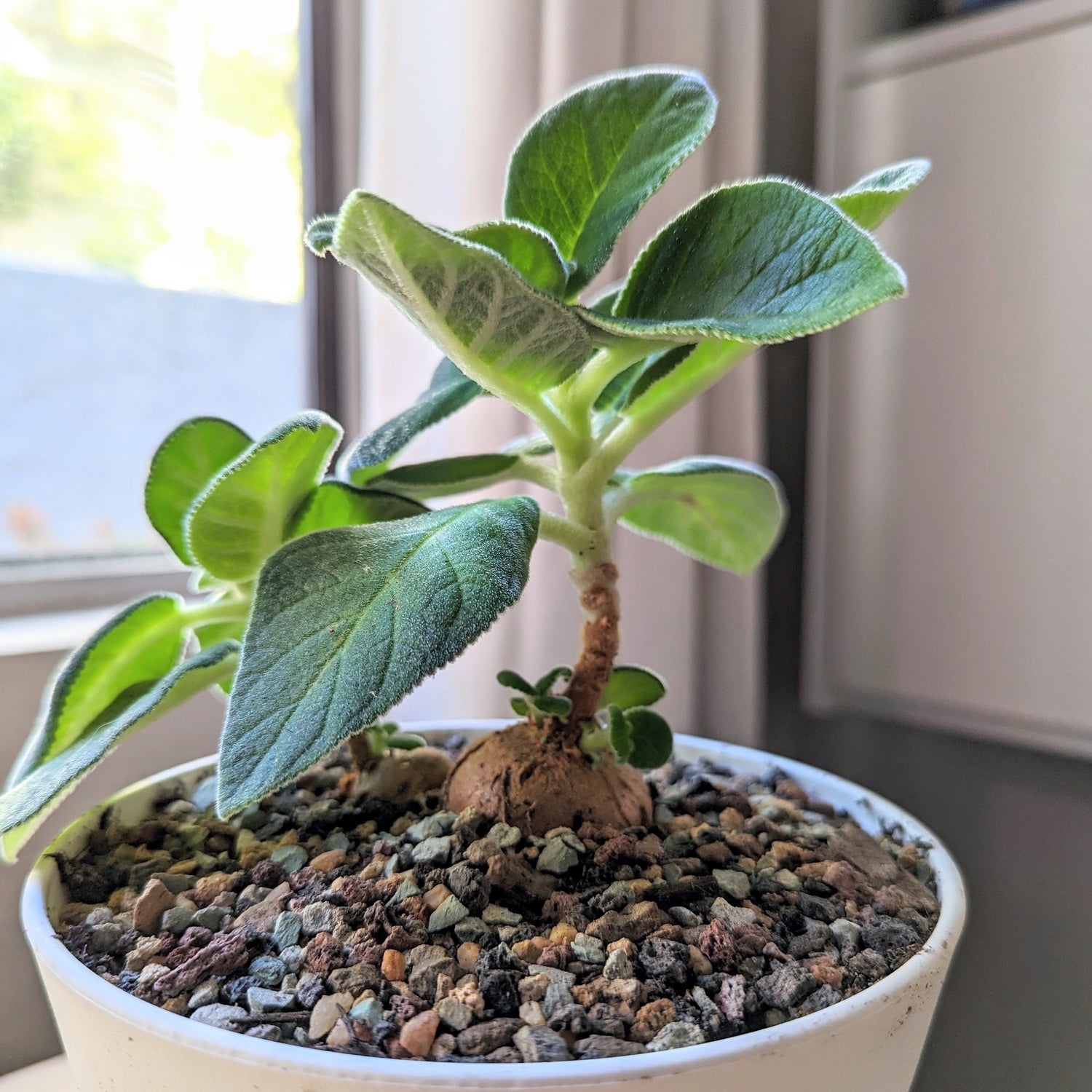It’s pretty common knowledge that you can grow herbs and tropical plants indoors…but what about veggies? The answer is yes! There are a few different veggie varieties that can do well indoors if you set them up right. They’re a little pickier about the conditions they prefer to grow in that some other plants, but it’s doable and it’s fun :)
Here are 5 different veggie varieties that can thrive indoors and give you fresh produce are year long!
1) Peas

Sugar Snap Peas are the perfect plant to grow indoors! Not only are they relatively easy to care for, but they’re beautiful vines that greenify your space!
To plant them, prep 4-6in pots with moist potting mix. Start off with 1-2 peas per pot, making sure you keep the soil moist but not soggy and the seeds should germinate within a few days.
When the plants grow to ~6in, pull off the new growth at the top so the the plants grow bushier, and add stakes or a trellis to give the peas support as they grow taller.
Lighting: A bright window like a south or west-facing window that gets 6-8 hours of sun or so, or for better results you can use a grow light for 8-12hrs a day.
Water: Make sure the soil is moist but never soggy. When the soil starts to look dry, it’s time to water thoroughly until you see water drip out from the bottom.
Fertilizer: Sugar Snap peas can stand to benefit from some nitrogen fertilizer at the start to help boost their growth. They later produce their own nitrogen so it’s not necessary to keep up.
Pollination: Peas self-pollinate, so there’s no need to pollinate these plants. To keep a regular harvest going, plant new seeds when you see the first flowers and keep that going through late summer so you can have your last harvest in the fall.
Maturity: Sugar Snap peas mature in about 60-70 days.
2) Arugula

Arugula is one of the easier veggies you could grow indoors. Growing your own Arugula means you can have a consistent supply of fresh greens to add to your meals to get an extra little vitamin boost :) Outdoors in a garden, arugula can grow to 2+ ft in height, but indoors it’ll stay at a more contained size.
Arugula dislikes heat, so it’s best to grow them in early spring or fall if you’re growing outdoors, otherwise if growing indoors just make sure it’s in a cooler spot. To get these seeds started, set up a tray or a nursery pot with moist potting mix. Roots for arugula don’t need too much space so you don’t need to worry about getting a very large container, around 4” works best to get nicely sized leaves.
Plant the seeds about 1/4” deep into the soil and once they start germinating and grow to ~1in tall, thin them to be >4in apart. That implies plucking out the less healthy seedlings and only leaving the healthiest ones(you can munch on the plucked seedlings so they don’t go to waste!)
Lighting: Ideally these plants should get 4+hrs of sun or 10-14hrs under a growlight a day, but some have even been able to successfully grow arugula by a north facing window during summer months. The key thing is to make sure the plant doesn’t overheat, which makes the leaves taste more bitter.
Water: Water regularly, making sure that the soil is never soggy!
Fertilizer: Arugula benefits from doses of 1/2 diluted liquid fertilizer every ~2 weeks once the plants reach 4” in height.
Maturity: Arugula matures within a month or so once the plant gets to 4-6in tall. Keep harvesting the leaves regularly, pulling off leaves from the base of the plant and leaving the stems so new leaves can grow back. The fresher the leaves the better they’ll taste. As long as you’re leaving the new growths in place, the plant will continue to produce more leaves. Make sure to remove flowers and their stems(which are edible) to keep the plant producing leaves.
You can also harvest microgreens once the first set of adult leaves grows in and sow a new batch after harvesting.

3) Cherry Tomatoes
Tomatoes are very versatile plants and can be grown in all kinds of places and pots, whether it be a patio, a window, garden, or under a grow light!
To get your tomatoes started, prep some planters of basically any size, depending on how big you want your tomato bush to be, and fill them up with moist regular potting mix. Plant the seeds 1/4” deep and add a plastic covering over the soil to keep them warm and humid until they germinate. Make sure that the seeds are somewhere around 70-80F so they can germinate successfully. Make sure the soil remains moist(not soggy) until the sprouts start to show up. They should start to germinate within 6-12 days. Make sure seedlings are at least 3-4” apart.
Lighting: Since tomatoes fruit, they need more light and energy than say, arugula which we only use for its leaves. They need about 8hrs of sun a day, so a south-facing window is best. You can still expect some fruit growing it by a west facing window, but not too much. Therefore, a grow light would be best if you don’t have the natural light. Give them 12-15hrs under a grow light to grow healthy and produce enough fruit.
Water: Wait for the soil to dry out a bit before watering, and water it thoroughly until you see water dripping out through the drainage holes.
Fertilizer: Tomatoes benefit from extra phosphorous, so once the seedlings are a few weeks old, begin fertilizing every couple of weeks with a fertilizer that contains a good amount of phosphorous.
Pollination: If grown outside, you don’t need to worry about pollination. If you’re growing indoors, use a small brush to transfer pollen from one flower to another.
Maturity: Plants reach maturity in 50-80 days.
Other tips include staking or adding a cage to keep your tomato plants stable and keeping the plants trimmed and removing any dying or diseased foliage.
4) Bell Pepper
There are many varieties of pepper that can be grown indoors. Hot peppers are excellent options to grow indoors, but you can also grow bell peppers from your home and have fresh peppers all year!
To get your peppers started, set up a planter with moist potting mix. A planter >4” would be best.

Sow the seeds 1/4” deep in the soil and keep them around 80-85F to have them successfully germinate- you can do use using a heat mat or by putting plastic covering over the soil. In the right conditions, pepper seeds should germinate within 6-12 days. If growing indoors, one plant per pot will be best, otherwise if growing outdoors, make sure they’re >12” apart. Peppers need to be kept warm, specifically keep them at >65F.
Lighting: Like tomatoes, peppers need a lot of energy to produce their fruit, so it’s important to provide lots of light. A west or south facing windowsill would be best if you’re using natural light, or if using grow lights, leave them on for 14-16hrs.
Water: Water thoroughly once the soil starts to dry out, ensuring the soil is never soggy.
Fertilizer: Start fertilizing the plants on a weekly basis when flowers start to bloom.
Pollination: Pollinate the flowers with a small paintbrush as you would with tomatoes.
Maturity: Peppers should mature within 65-80 days.
5) Beets
Surprised that beets can be grown indoors? Roots like carrots or beets can be grown successfully indoors if given the right conditions! What’s more, the foliage is colorful and beautiful, and can serve as a lovely houseplant in its own right :)
The key thing for growing beets is setting up a container big enough. You’ll want the planter to be at least 1-1.5’ tall so that the roots have enough room to grow.
Plant the beet seeds 1/4” deep and 1ft apart from one another in moist potting mix. Beets don’t need a lot of warmth to germinate and can germinate in temperatures as low as 50F, but will germinate more quickly in warmer temperatures. With bright light and moisture they should germinate in 6-20 days. Keep the plants in 75-90F temperature.
Lighting: If growing by a window, keep rotating the planter throughout the week to make sure all parts of the plant get light. Otherwise, grow under a grow light for at least 8hrs of light a day to give the plant the energy it needs to properly grow.
 Water: Water regularly, only watering once the soil starts to dry out.
Water: Water regularly, only watering once the soil starts to dry out.
Fertilizing: Beets don’t need extra fertilization.
Maturity: 40-60 days, once the beets get to about ~1-2” in diameter.
That completes the list! Have you tried growing any of these veggies indoors? I also sell all these seeds as a collection, try out growing some of these varieties indoors!
As usual, if you have any questions whatsoever about growing these, let me know, I’m here to help out :) And tag me @plantflix in your pictures! I love seeing people having fun with growing from seed and all the creative setups y’all make for your plant babies <3
Like this post? Here are some others you may enjoy:





